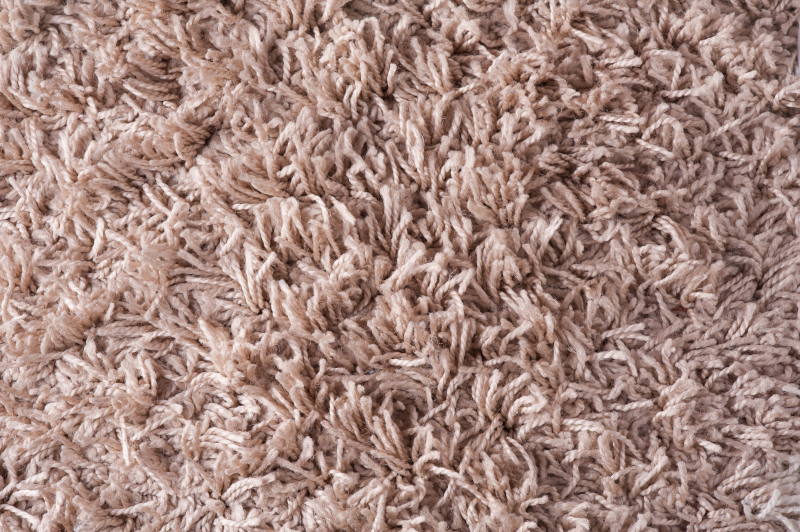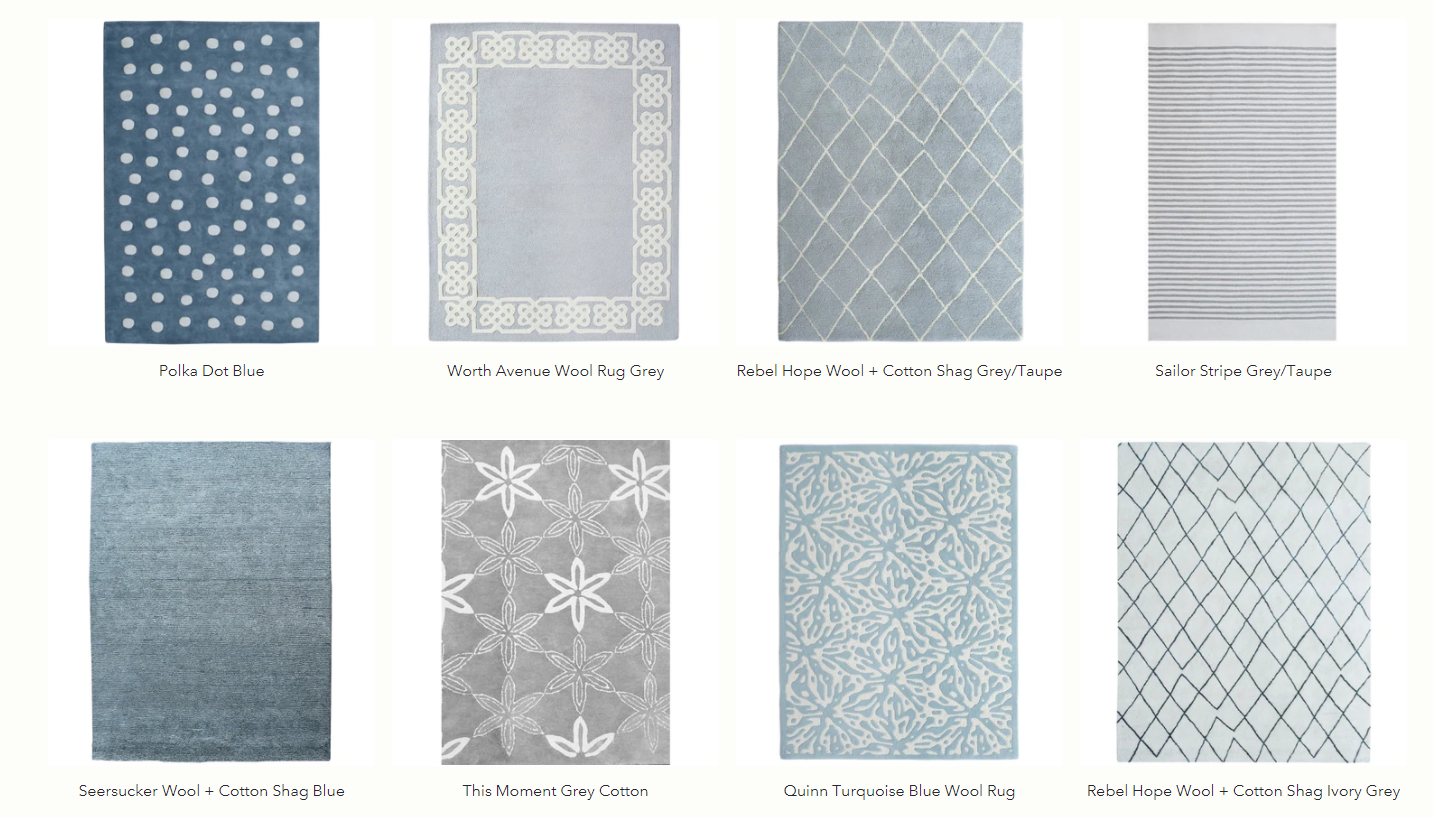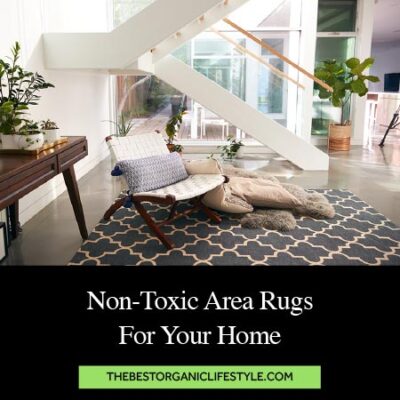Disclosure: This post may contain affiliate links. I receive a small commission at no cost to you when you make a purchase using my link.

Shag area rugs have slowly become a necessity in U.S homes for quite a few reasons–they are cozy, stylish, and spice up an otherwise “boring” shag area alone, without the need to add any other floor accessories. It’s no wonder they adorn other regions of the house as well.
The thing is, most cheap and factory-processed shag area rugs may leave a toxic footprint on your surroundings, due to the fact they are produced using harsh and potentially toxic substances that are bad for human health and the environment. Therefore, if you are conscious about what you place inside your home, you have to go for a non-toxic shag area rug and not resort to something that is cheaply made in a factory of a third-word country with dubious and unsustainable manufacturing methods.

Types of shag area rugs
There are several shag area rugs in the market made with different materials and textures. The most common types are:
Synthetic Shag Rugs
These are made of synthetic fibers like nylon, polyester, and olefin that are able to mimic the look and texture of wool or cotton, through a variety of manufacturing processes. These are a cheap option if you are on a budget. However, they are often made with substances, e.g., fabric fillers, dyes, etc., that may be toxic and unhealthy so do your research and avoid anything that is made with toxic materials.
Cotton Shag Rugs
Cotton shag areas and especially those made of organic cotton, are perhaps the softest and most versatile type you may find as cotton can be processed in many different ways and create several styles that cannot be easily created using other materials. Cotton is also very breathable and very easy to wash–some cotton rugs can even be hand or machine washed.
Jute and Bamboo Rugs
These types of rugs use a mixture of natural jute and bamboo fibers and have a rough, texturized finish that’s ideal for adding a wild or coastal vibe to your area. They are quite cheap, but they can be long-lasting too. Some types of jute and bamboo fiber rugs can also be used outdoors, as long as they are labeled as tolerant to exposure from the elements (wind, sun, moisture,etc.). Their solid and varied structure also makes them ideal for layering other rugs above or below their surface.
Linen Rugs
A natural rug style popularized in Europe made of 90-100% organic linen fibers. Linen itself is a fine and soft material with a sleek finish and a slightly lustrous surface, giving an air of luxury to your shag area. The material can also absorb humidity and is very easy to wash and clean. On the downside, it’s not very durable and is slightly more costly compared to other natural materials.
Leather Shag Rugs
Leather shag rugs are renowned for their unique and sleek texture and look. They feature small and thin strips of leather (usually dyed), which is tied by hand to keep the cotton layer they are based on sturdy and in place. They are available in natural leather colors, e.g., beige or dyed, often in multiple hues appearing on the same rug. On the downside, they can be a tad expensive, smelly and leather shags made of dyed leather strips may also come with toxic chemicals like VOCs.

Wool Shag Rugs
Wool shag areas are typically split into two categories: felt wool and felted wool, based on their level of processing.
Wool felt is a non-woven wool material that is only roved using heat, moisture, and agitation to cleanse and refine its fibers. This roved wool material binds and matts together to create the wool felt, as we know it.
Felted wool does start with the same process, but there is additional processing which involves the use of different wool threads and sometimes other similar fabrics e.g wool and rayon, the latter being manually derived from wood pulp.
The look and texture of felted wool are more complex, bubbly and varied, as opposed to non-woven wool felt. Still, they both possess the same beautiful properties of wool–soft texture, coziness, durability and sustainability. Not only this, felt or felted wool that is hand-woven or mechanically processed only doesn’t come with any toxic materials, especially if it’s certified organic or non-toxic.
A very popular woven wool style is known as flokati. Flokati is a traditional style originally coming from Greece, with a distinct white or off-white color that is typically not bleached or treated with dyes (unless it comes from a factory that uses artificial methods of production). It’s super soft, lush, shaggy, and very durable, as long as it’s treated with care and love.
If you are therefore looking for something natural, durable, and soft, wool is the best material to choose for your rug.
Berber Shag Rugs
These rugs took their name from the traditional manufacturing methods employed by Berber people that are native to North Africa. The original style soon gained popularity and nowadays, Berber shag rugs refer more to the style used rather than its origins. These types of rugs are characterized by their loop pile format and their vivid mixed patterns.
Originally they were made from natural materials, e.g., wool or cotton, but nowadays, they can be made from synthetic or mixed materials. Their look and texture highly resemble fur–they are soft, plushy, and highly durable. Traditionally made (hand-woven) ones are especially good not only because of their quality but because of their non-toxicity too.
Mixed Material Shag Rugs
A popular style that is continuously gaining ground is shag rugs made of different materials, either natural or synthetic. A typical traditional and natural mixed style that dates back to the mid-century was a combination of cotton and bamboo viscose. Today, it’s not uncommon for designers to combine both flat woven and shag textured rags in the same rug. This means that due to the manufacturing process, some fibers will be looser and more “airy” while others will be bound together, forming a more stiff and flat look.
If you are looking to add some personality and creativity to your shag area, this distinct style will do. On the downside, their mixed pattern can attract dust and mite more easily and the synthetic mixed rags may contain toxic chemical fillers, dyes, and binders.

Why natural hand-woven rugs are the best
It is estimated that 60% of U.S homes have at least one rug in their homes, and in many cases, in every area or room of the house and not only in the shag area. The problem is that the cheap synthetic options often come with harmful substances that are associated with numerous health issues and leave a poor environmental footprint as well. More specifically, many synthetic shag area rugs contain the following substances:
- VOCs. VOC stands for Volatile Organic Compounds and is a class of chemicals that come from synthetic solid or liquid materials which are later released as gasses in the atmosphere. These chemicals include formaldehyde, toluene, styrene, benzene, and acetone, among others. These are probably the most toxic chemicals that may lurk in synthetic shag rugs–according to some studies, VOCs can lead to a wide range of problems: eye and skin irritation, throat irritation, loss of balance and coordination, liver damage, kidney damage, hallucinations, and the list goes on.
- Adhesives (glues) and plasticizers. These types of chemicals are used to bind and enhance the texture of the shag rug and protect it from stains, moisture, or various cloth-eating bugs. The “new rug smell” often comes from an adhesive substance that is called 4-PC and is found in the latex-backing layer of 95% of U.S made rugs today. This is linked with eye and nose infections and breathing problems, among other things. Back in 2000, a well-known company has removed a plastic chemical called perfluoro-octyl-sulfonate from their product because it has been found in studies to induce reproductive issues.
- Moth-Proofing chemicals. Mothproofing chemicals, just as their name suggests, are classes of chemicals that emit an odor or gas that repels moths and other bugs that may be “eating” clothes. The most commonly used ones are dieldrin, naphthalene, and cyfluthrin. The problem is that these chemicals may cause adverse skin reactions and are also toxic for newborns, house pets and the environment.
In addition to the above chemicals, shag area rugs may contain fire retardants (chemicals used to prevent or slow down fire flames) and, of course, synthetic dyes. The first category includes Polybrominated Diphenyl Ethers (PBDEs) which have been found in some studies to disturb normal thyroid function, cognitive development, and immune system function. Synthetic dyes are also quite dangerous as they come with a multitude of chemicals that are toxic for humans, animals, and the atmosphere: chromium, lead, sodium chloride, copper, toluene, and benzene among many others. When these come into contact with the skin, they cause skin irritation, respiratory problems and in extreme cases, when there is regular exposure to these chemicals, cancer may form as well.
Keep in mind that these are just a few of the substances that lurk in common synthetic shag area rugs, so imagine how significant the risk for side effects is with so many potentially toxic substances sneakily hidden inside. You certainly don’t want to expose yourself or your loved ones to toxicity.
This is where natural, eco-friendly, and non-toxic certified shag rugs come in. Not only are they free of all these unwanted toxins, but they also come with other perks too. Hand-woven wool rugs especially, using a traditional old-school method, are also classic, timeless and have that distinct vintage look that looks luxurious yet matches any home style. They are crafted with love and care and under fair-trade practices that help native people that make these or source their materials end slavery work and earn a decent income. Natural hand-woven shag rugs are just superior in nearly all aspects compared to their synthetic counterparts.
Our Best Pick for Non-Toxic Shag Area Rugs

If you are looking for a brand that produces non-toxic shag area rugs, Organic Weave is a stellar option. The brand takes pride in producing hand-woven rugs and specifically who created them, how, and what materials were used in the process. Their products are exclusive and made by the hands of true artisans with particular attention to detail and of course, plenty of love and respect for the people that buy them–people that wish to live pure and toxic-free lifestyles for various reasons.
In general, you want to choose a brand that is certified as non-toxic and eco-friendly using traditional methods of weaving and threading and a brand that is not afraid to disclose how their products are made. These natural and non-toxic rugs may come at a higher price tag than synthetic parts, but in the end, your health and the environment will thank you for making such a natural and non-toxic choice!
Use Coupon Code “BestOrganic” to get 10% off your order at checkout.
This post was originally published on July 5, 2020.




Leave a Reply